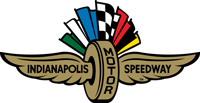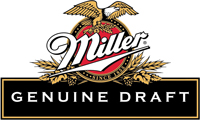1965
■ Roger Penske steps away from driving a race car to focus on his first business, a Philadelphia Chevrolet
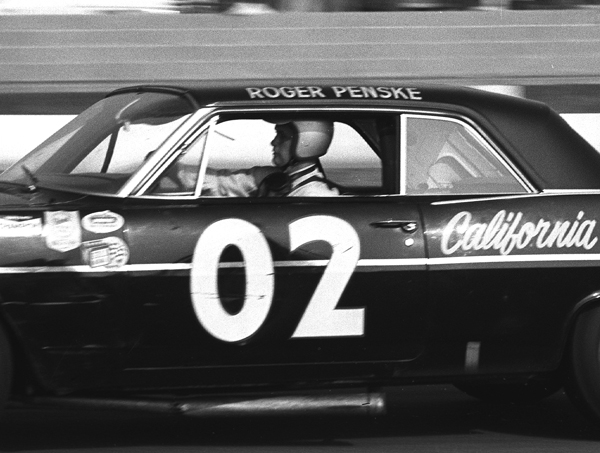 |
Roger Penske retired from driving race cars to focus on his car dealership.
Photo by: Team Penske |
dealership.
1968
■ After three years of fielding sedans and sports cars in races, Team Penske and driver Mark Donohue make their debut in IndyCar racing, running a pair of USAC-sanctioned road races.
1969
■ Team Penske runs its first Indianapolis 500. Donohue finishes seventh and is named Rookie of the Year.
1971
■ Team Penske makes its Formula One debut with Donohue in the Canadian Grand Prix.
1972
■ Donohue captures Team Penske’s first Indianapolis 500 victory.
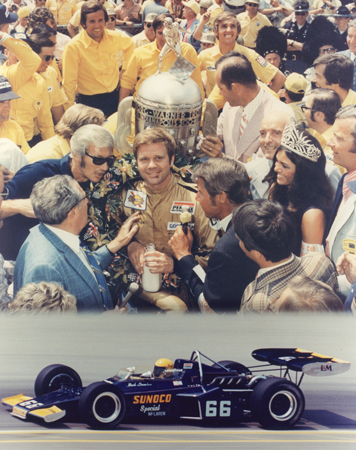 |
Mark Donohue celebrates Team Penske's first Indy 500 win.
Photo by: Team Penske |
■ Team Penske makes its NASCAR debut at Riverside, Calif., with Donohue driving. Donohue competes in four NASCAR races this year, Dave Marcis in seven and Donnie Allison in one.
1973
■ Donohue records the team’s first NASCAR victory, taking the checkered flag at Riverside. He also wins the inaugural International Race of Champions all-star series title.
■ Roger Penske buys Michigan International Speedway for $2 million and invests millions of dollars into improving the facility. During his ownership, the track’s grandstands would be expanded from 25,000 to over 125,000 seats and several buildings would be added.
1975
■ Donohue dies from injuries suffered in a crash while practicing for the Austrian Grand Prix F1 race.
1977
■ Driver Tom Sneva leads the team to its first USAC IndyCar championship.
1979
■ Rick Mears wins the Indianapolis 500 from the pole and goes on to win the CART championship.
1980
■ Rusty Wallace makes his NASCAR debut with Team Penske.
1981
■ Mears collects six victories and wins his second CART championship.
■ Bobby Unser wins the Indianapolis 500 from the pole.
■ Team Penske partners with Snap-on Tools, beginning its longest-running partnership.
1982
■ Mears wins his third CART title in four years.
1983
■ Al Unser scores Team Penske’s sixth IndyCar championship since 1977.
1984
■ Mears wins the Indianapolis 500 from the pole.
■ Team Penske partners with PPG, a relationship that continues today.
1985
■ Danny Sullivan wins the Indianapolis 500.
■ Al Unser edges son Al Unser Jr. by one point in the closest championship battle in CART history, giving Team Penske its seventh IndyCar title.
1986
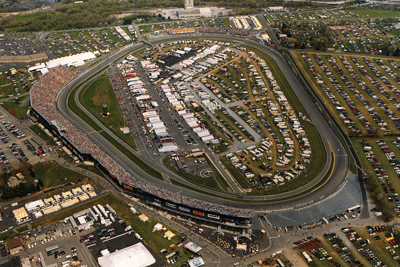 |
Nazareth Speedway
Photo by: Getty Images |
■ Roger Penske begins Ilmor Engineering with Paul Morgan and Mario Illien, and the team begins developing the Ilmor Chevy Indy engine.
■ Roger Penske acquires Nazareth Speedway in Pennsylvania and redesigns the track from a one-mile dirt oval to a one-mile paved oval. The track reopens the following year.
1987
■ Al Unser wins the Indianapolis 500.
1988
■ Mears wins the Indianapolis 500 while Sullivan wins the CART championship.
1990
■ Sullivan and Emerson Fittipaldi win races for the Marlboro-sponsored team.
1991
■ Penske Racing South launches as Penske re-enters NASCAR with driver Rusty Wallace and sponsor Miller Brewing Co.
■ Mears wins his fourth Indianapolis 500 race — Penske’s eighth at the time.
■ In addition to starting its iconic partnership with Miller, Team Penske begins long-standing sponsorships with Mazak and Bosch.
1993
■ Wallace wins a career-high 10 races.
■ Fittipaldi wins his second Indianapolis 500.
1994
■ Al Unser Jr. wins the team’s 10th Indianapolis 500 en route to the CART championship.
1995
■ Penske Motorsports, the unit created for Penske’s racetrack holdings, breaks ground on Auto Club Speedway in Fontana, Calif.
1996
■ Due to the split between CART and the Indy Racing League, Team Penske doesn’t enter a car in the Indianapolis 500 for the first time since 1969.
1997
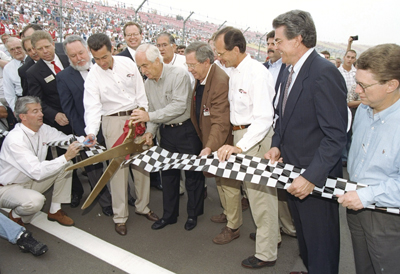 |
Roger Penske cuts the ribbon to officially open Auto Club Speedway in California.
Photo by: Getty Images |
■ Penske Motorsports opens Auto Club Speedway and buys a 45 percent stake in Homestead-Miami Speedway.
1998
■ Penske South becomes a two-car NASCAR operation with Jeremy Mayfield as its driver after purchasing majority interest in Michael Kranefuss Racing.
■ Penske Motorsports buys interest in North Carolina Speedway in Rockingham, N.C.
1999
■ Penske Motorsports sells Michigan, Nazareth, Auto Club, Homestead-Miami and North Carolina Motor speedways to International Speedway Corp.
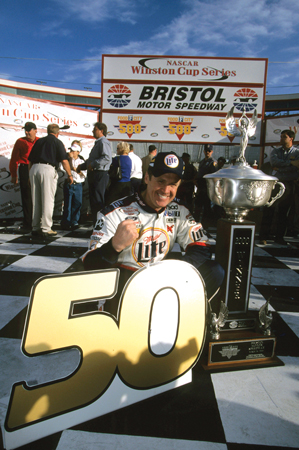 |
Rusty Wallace celebrates the 50-win mark.
Photo by: Team Penske |
2000
■ Wallace cracks the 50-race victory barrier at Bristol in NASCAR’s Food City 500.
■ Roger Penske acquires full ownership of Penske-Kranefuss Racing.
■ Ryan Newman makes his NASCAR debut, with Alltel as his sponsor. Alltel would later evolve into the Verizon sponsorship of driver Will Power in the Verizon IndyCar Series in 2009.
■ Gil de Ferran wins his first CART title and the 10th IndyCar championship for Team Penske.
■ Helio Castroneves wins his first CART race and introduces his signature victory celebration of climbing the fence closest to the finish line.
2001
■ Penske South becomes a full-time, three-car NASCAR operation with Wallace, Mayfield and Newman. Mayfield is later replaced by Mike Wallace, Rusty’s younger brother.
■ De Ferran captures his second consecutive CART FedEx championship.
■ Castroneves wins the Indianapolis 500, Team Penske’s 11th trip to victory lane at the Brickyard.
2002
■ Penske South returns to a two-car operation. Newman wins his first NASCAR Winston Cup Series race and is named Raybestos Rookie of the Year.
■ Team Penske moves to the Indy Racing League and Castroneves wins his second consecutive Indianapolis 500.
2003
■ Newman leads the NASCAR Winston Cup Series in victories with eight.
■ De Ferran earns Team Penske’s 13th Indianapolis 500 victory.
2004
■ Penske South returns to a three-car operation with the addition of Penske-Jasper Racing.
2005
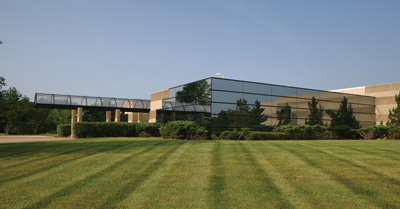 |
Team Penske moves into its new headquarters.
Photo by: Team Penske |
■ Rusty Wallace retires as a driver in the NASCAR Nextel Cup Series and Team Penske signs Kurt Busch to succeed him.
■ Newman sets a NASCAR Busch Series record with five consecutive victories.
■ Team Penske announces its return to sports car racing with Porsche, fielding a two-car team in the American Le Mans Series.
■ Team Penske’s NASCAR teams complete their move to a new complex in Mooresville, N.C. Before the year ends, Team Penske’s sports cars series team will have moved from Reading, Pa., to the North Carolina facility.
2006
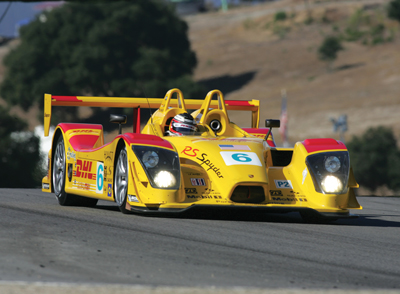 |
Team Penske and Porsche dominate the American Le Mans Series.
Photo by: Team Penske |
■ Team Penske and Porsche win the driver, manufacturer and team championships in the American Le Mans Series LMP2 class.
■ Sam Hornish Jr. wins his first Indianapolis 500 en route to delivering Team Penske the
IndyCar Series championship.
■ The team’s IndyCar Series operations complete a move to the Mooresville complex. By early 2007, all of Team Penske’s race teams would call the structure home.
2008
■ Newman and Busch finish first and second, respectively, in the Daytona 500, giving Team Penske its first victory in “The Great American Race.”
2009
■ Castroneves claims his third victory in the Indianapolis 500, Team Penske’s 15th win at Indy.
■ In addition to Verizon’s sponsorship of Will Power’s IndyCar entry, Team Penske welcomes new sponsors Discount Tire, Ruby Tuesday and Magellan.
2010
■ Team Penske wins its first NASCAR championship, with driver Brad Keselowski accomplishing the feat in the NASCAR Nationwide Series.
■ Team Penske adds Shell-Pennzoil, Izod, Meijer, Alliance Truck Parts, Guidepoint Systems and Coca-Cola as sponsors.
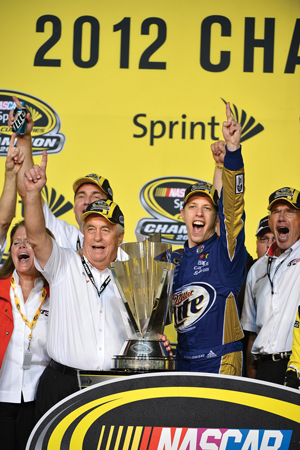 |
Team Penske celebrates its first NASCAR Sprint Cup championship.
Photo by: Team Penske |
2012
■ Team Penske, with Keselowski behind the wheel, earns its first NASCAR Sprint Cup Series championship.
2013
■ Every Team Penske driver wins a race this year, including new addition Joey Logano.
2014
■ The winningest season to date for Team Penske with 22 victories overall.
■ Power wins the Verizon IndyCar Series championship. Following the season, Team Penske announces it will expand to a four-car operation in the series in 2015.
■ Team Penske announces a partnership with Dick Johnson Racing, Australia’s most established race team, to compete in the 2015 V8 Supercars Championship.
2015
■ Logano delivers Team Penske its second Daytona 500 victory.
■ Juan Pablo Montoya wins the Indianapolis 500, Team Penske’s 16th win at the Brickyard.
Sources: Team Penske, SportsBusiness Journal research




